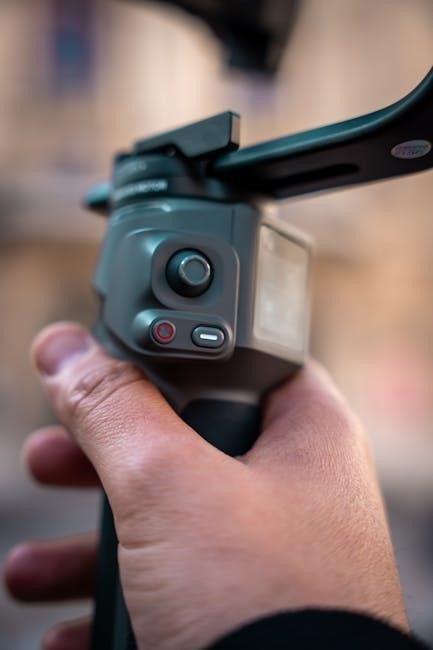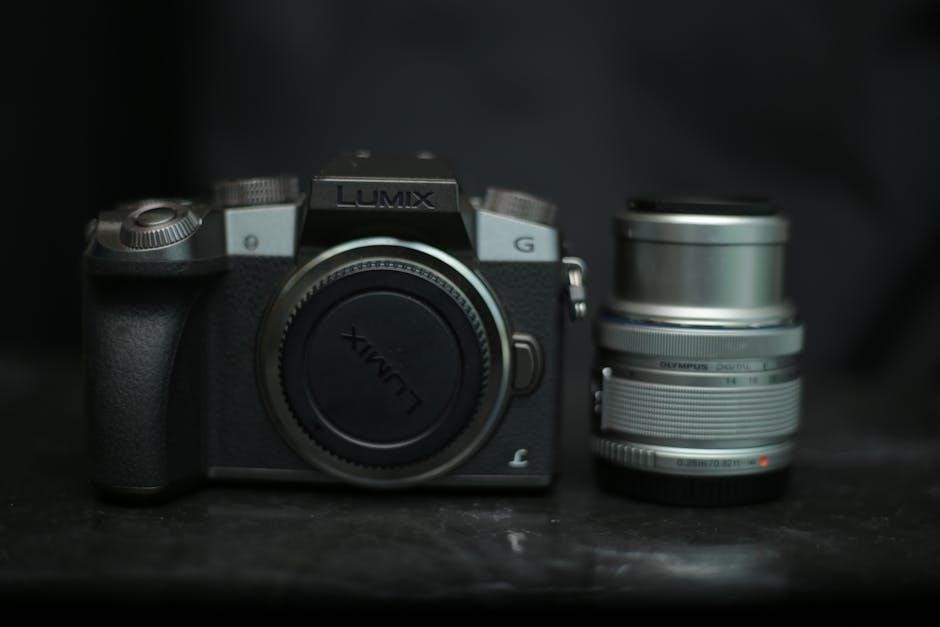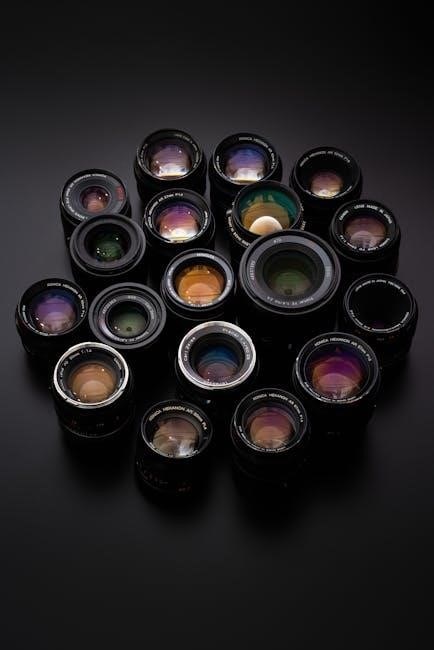The Panasonic Lumix DMC-TZ80 manual is available online, with 408 pages of operating instructions, and can be downloaded in PDF format from various websites, including the official Panasonic website, for user guidance and support purposes always․
Availability of the Manual
The manual for the Panasonic Lumix DMC-TZ80 is readily available online, allowing users to access it from various websites․
The manual can be downloaded in PDF format, making it easy to access and print out if needed․
Users can search for the manual on search engines, and it is also available on the official Panasonic website․
Additionally, websites such as manua․ls provide a copy of the manual, which can be viewed online or downloaded․
The manual is comprehensive, with 408 pages of operating instructions, covering all aspects of the camera’s functions and features․
It is a valuable resource for users, providing them with the information they need to get the most out of their camera․
The availability of the manual online makes it convenient for users to access it at any time, and it is a useful tool for troubleshooting and learning about the camera’s advanced features․
Overall, the manual is an essential resource for anyone using the Panasonic Lumix DMC-TZ80 camera․
It provides detailed information on the camera’s operation, and is a useful guide for both beginners and experienced photographers․
The manual is easy to navigate, and is a valuable companion to the camera itself․

Features of the Camera
The camera has various features including a super zoom lens and image stabilization for clear photos always captured with ease and precision using the device․
Zoom Lens Capability
The Panasonic Lumix DMC-TZ80 has a 30x optical zoom lens, which is a LEICA DC VARIO-ELMAR lens, allowing users to capture a wide range of scenes, from landscapes to portraits, with ease and precision․
The lens has a focal length of 24-720mm, making it suitable for various photography applications, including travel, sports, and wildlife photography․
The zoom lens capability of the camera is one of its key features, and it is designed to provide users with the flexibility to capture high-quality images in different environments․
The camera’s zoom lens is also designed to work seamlessly with the camera’s image stabilization system, which helps to reduce camera shake and blur, resulting in sharper and clearer images․
Overall, the zoom lens capability of the Panasonic Lumix DMC-TZ80 is a significant advantage, and it makes the camera a great choice for users who want a versatile and powerful camera․
The camera’s lens is also designed to be compact and lightweight, making it easy to carry around, and it is suitable for users who want a camera that can keep up with their active lifestyle․
The zoom lens capability is a key feature of the camera, and it is designed to provide users with the flexibility and creativity they need to capture high-quality images․

Image Stabilization
The camera features HYBRID O․I․S technology for clear and sharp images always, reducing camera shake and blur effectively․
HYBRID O․I․S․ Technology
The HYBRID O․I․S․ technology in the Panasonic Lumix DMC-TZ80 manual is a advanced image stabilization system that combines optical and digital image stabilization to reduce camera shake and blur, allowing for sharper images and videos․
This technology is particularly useful for capturing images in low light conditions or when using the camera’s zoom lens․
The HYBRID O․I․S․ technology also helps to reduce the effects of hand shake and other camera movements, resulting in clearer and more stable images․
The Panasonic Lumix DMC-TZ80’s HYBRID O․I․S․ technology is a key feature that sets it apart from other cameras in its class, and is a major advantage for photographers who want to capture high-quality images in a variety of conditions․
Overall, the HYBRID O․I․S․ technology in the Panasonic Lumix DMC-TZ80 is a powerful tool that helps photographers to take better photos and videos, and is an important part of the camera’s overall feature set․
The technology is fully explained in the camera’s manual, which provides detailed instructions on how to use it to get the best results․
By using the HYBRID O․I․S․ technology, photographers can take their skills to the next level and capture images that are sharper, clearer, and more vibrant than ever before․
The Panasonic Lumix DMC-TZ80’s HYBRID O․I․S․ technology is a game-changer for photographers, and is a major reason why the camera is so popular among photography enthusiasts․
With the HYBRID O․I․S․ technology, photographers can focus on taking great photos, rather than worrying about camera shake and blur․
The technology is easy to use, and is fully integrated into the camera’s operating system, making it simple for photographers to get the best results․
The Panasonic Lumix DMC-TZ80’s manual provides full details on how to use the HYBRID O․I․S․ technology, and how to get the most out of it․
By following the instructions in the manual, photographers can unlock the full potential of the HYBRID O․I․S․ technology, and take their photography to new heights․
The HYBRID O․I․S․ technology is a key feature of the Panasonic Lumix DMC-TZ80, and is a major advantage for photographers who want to capture high-quality images․
It is a powerful tool that helps photographers to take better photos and videos, and is an important part of the camera’s overall feature set․
The technology is fully explained in the camera’s manual, which provides detailed instructions on how to use it to get the best results, and is easy to use, making it simple for photographers to get the best results, always․

Operating Instructions
Operating instructions for the camera are provided in the manual, with guides on basic and advanced features, to help users understand and operate the device effectively and efficiently always online․
Advanced Features Manual
The advanced features manual for the Panasonic Lumix DMC-TZ80 provides detailed information on the camera’s advanced functions, including settings for aperture, shutter speed, and ISO sensitivity․ The manual also covers topics such as white balance, autofocus, and metering modes․ Additionally, it provides guidance on using the camera’s advanced features, such as panorama shooting, time-lapse recording, and focus stacking․ The manual is designed to help users get the most out of their camera and take their photography to the next level․ With its comprehensive coverage of advanced features, the manual is an essential resource for anyone looking to unlock the full potential of the Panasonic Lumix DMC-TZ80․ The manual is available online and can be downloaded in PDF format, making it easily accessible to users; Overall, the advanced features manual is a valuable tool for anyone looking to improve their photography skills and get the most out of their camera․

Specifications and Reviews
DXO mark and Dpreview provide detailed reviews and specifications of the camera, including image quality and performance metrics always online for user reference purposes quickly․
DXO Mark and Dpreview
The DXO Mark website provides a comprehensive review of the camera’s image quality, including its sensor performance, lens quality, and overall score․ Dpreview also offers an in-depth review, covering aspects such as image quality, camera features, and handling․
Both websites provide detailed comparisons with other cameras, allowing users to make informed decisions when choosing a camera․ The reviews on these websites are based on rigorous testing and evaluation, making them a trusted source for camera enthusiasts and professionals alike․
The information provided on DXO Mark and Dpreview is extensive, covering various aspects of the camera, including its technical specifications, sample images, and videos․ This wealth of information enables users to gain a thorough understanding of the camera’s capabilities and limitations․
By consulting these websites, users can make informed decisions about the camera, taking into account their specific needs and requirements․ Overall, DXO Mark and Dpreview are valuable resources for anyone looking to purchase or learn more about the camera․

Leave a Reply